Beyond the BlackRock CEO Letter: Why We Need Green Barbarians At the Gate


To what extent are CEOs worried about sustainability issues?
According to the latest PwC’s 21st CEO Survey, the answer in general is 'to some extent.' Climate change & environmental damage is #9 on the list of CEOs’ concerns globally. However, there is an interesting geographical divide: While CEOs in Western Europe, Asia Pacific and Latin America include it in their list of top ten threats, climate change & environmental damage is absent from the top ten lists of CEOs in the rest of the world.
‘Social Instability’ which reflects concerns regarding inequality, human rights, gender, minorities, and so on, the picture is very similar – low priority in general (11th place in the global list), but in some areas around the world, like Africa (#1!), Central & Eastern Europe (#7) or even North America (#8) CEOs are more worried about it.
But maybe, just maybe, the right question is not how much CEOs are concerned about this or that issue, but what do they actually do about it? After all, we already know that attitudes ≠ behavior as demonstrated by endless surveys showing how consumers want to support sustainable brands.
If the question was about what CEOs do rather what they are concerned about, the picture would be somewhat bleaker. One indication is a draft of a new UN report suggesting “we are 'extremely unlikely' to meet the Paris Agreement goal of keeping global warming below 1.5 degrees Celsius” due to lack of sufficient action so far. This notion is also reflected in the point BSR makes in its new report: “many companies continue to struggle to incorporate sustainability into their strategies, governance, and management structures.”
In the past I suggested the focus should be more on changing the environment in which companies operate, not the CEOs because when the environment does not prioritize sustainability, CEOs will not prioritize it (in most cases), no matter what. I still believe this is very much the case, which is why I found the conversation around the letter Larry Fink, Founder and CEO of BlackRock sent earlier this month to CEOs, so interesting. In his letter, entitled ‘ A Sense of Purpose’, Fink writes:
Indeed, the public expectations of your company have never been greater. Society is demanding that companies, both public and private, serve a social purpose. To prosper over time, every company must not only deliver financial performance, but also show how it makes a positive contribution to society. Companies must benefit all of their stakeholders, including shareholders, employees, customers, and the communities in which they operate. Without a sense of purpose, no company, either public or private, can achieve its full potential. It will ultimately lose the license to operate from key stakeholders.Wow. These are very strong words coming from the head of the world's largest asset manager with about $6 trillion in assets under management. No wonder Andrew Ross Sorkin of the New York Times suggested “it may be a watershed moment on Wall Street, one that raises all sorts of questions about the very nature of capitalism,” and Yale management Professor Jeffrey Sonnenfeld is quoted in Sorkin’s article saying he’s seen “nothing like it.’’ Andrew Winston on HBR was also optimistic about the letter, although more cautious reminding the readers that these themes came up in prior annual letters Fink sent to CEOs and that in general, taking action, like BlackRock did in the case of supporting a shareholder resolution demanding ExxonMobil to disclose climate change risks, can be more impactful than just writing letters.
I would like to take it one step forward and suggest that if we want to see any meaningful change in CEOs’ attitudes and more importantly activities we do need progressive investors to act more like ‘barbarians at the gate.’ The reason is very simple - it seems like CEOs pay a lot more attention to investors who “amass large stakes in a company and, through brute force, push for changes in the company’s leadership and business practices.”
Here’s one example: P&G spent according to some estimates at least $35 million in a proxy fight against Nelson Peltz, who invested heavily in the company and wanted to have a seat on the company’s board of directors. This fight, which is considered to be the biggest and most expensive one in the history of the company was not just about a board seat, but about the company’s future: Peltz wanted to make some radical changes in the company to “regain lost market share,” while the company claimed it is doing just fine. Peltz eventually won in a very close race and received a seat at the board. Now his vision and agenda will be shaping now P&G’s future.
Here’s another example: Last June GE board replaced Jeff Immelt, the company’s CEO for 16 years with John Flannery. According to reports Immelt was replaced due to pressure on the company from no other than Nelson Peltz. The main problem Peltz had with Immelt was the company’s lagging stock performance - “Peltz was after Immelt because he was "concerned about [GE] missing recent earnings targets," Fox news reported last March. Fast forward to 2018 and Immelt is no longer around, Peltz’s investment company gets a board seat and the new CEO seems to be far more aligned with Peltz’ agenda.
These are just two examples, but you can find many more of activist investors that understand corporate leverage points and take advantage of corporate governance weaknesses to promote their own agenda. As Rana Foroohar explains in her book ‘Makers and Takers: The Rise of Finance and the Fall of American Business’: “it’s no accident that as the activists have become more and more active, buybacks and dividend payments have reached record levels.”
We now need another type of activist investors – ones that are willing to act aggressively, just like Carl Icahn, Bill Ackman, Nelson Peltz Daniel Loeb and other activist investors, but this time to promote strong sustainability agenda.
I leave it to smart investors like Fink to figure out how to do it, but it can make sense (even for a passive investor like BlackRock) to focus on board changes –just see the impact that adding one board member, who is one out of eleven had on P&G.
Letters offering a sustainable vision are important and can have some impact, but even if they represent so and so trillions of investment, they are just letters. I’d like to remind Fink and others the Carbon Disclosure Project (CDP), with its network of investors and purchasers, representing over $100 trillion that has done great work increasing business’ levels of environmental disclosure worldwide, but has not managed to move the needle, i.e. getting enough companies to comply with the Paris agreement goals or adopt the Sustainable Development Goals.
At the end of the day we need business to embrace exponential change, not incremental one and do it fast. If we want to this change to happen, we need to see more green barbarians at the gate acting fiercely to enact strong sustainability agenda, not just writing nice letters.
Image credit: Mike Lawrence,CreditDebitPro.com
Royal Dutch Shell Invests in Tennessee Solar

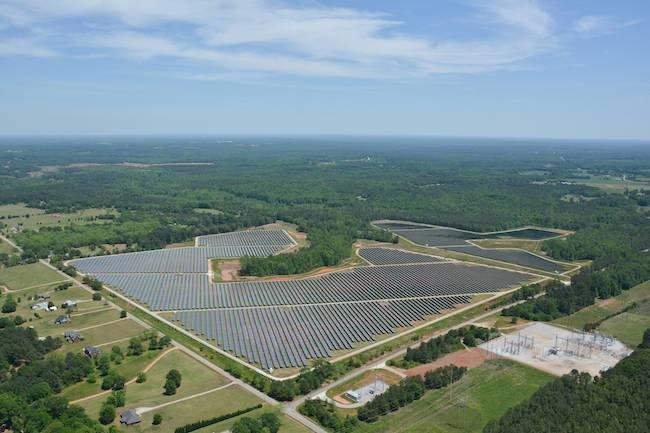
When President Trump formulated his "American Energy Dominance" message, he may not have had the power of global oil and gas producers in mind. Europe's Statoil is moving forward with its Empire offshore wind farm hard by the New York City shoreline, and now a unit of Royal Dutch Shell has acquired a major stake in the Tennessee-based solar developer Silicon Ranch.
As overseas global oil and gas companies plow more investment dollars into the U.S. renewable energy market, the Energy Dominance theme is getting muddied. The theme is generally understood to support U.S. fossil fuel development, but it's difficult to make the pitch for "America First" when domestic energy assets are owned or leased by companies headquartered elsewhere. To make matters worse for the Trump Administration, the rise of renewable energy is putting the squeeze on fossil fuel production here in the U.S.
Global companies eye U.S. renewable energy market
The news from Statoil and Shell is particularly interesting because both companies have jumped into two of the more challenging arenas in the U.S. renewable energy landscape.
The offshore wind industry has been slow to develop in the U.S., partly due to obstruction by Republican governors in control of Atlantic coast states. It's no accident that the nation's first commercial wind farm took shape off the coast of Rhode Island, where the political headwinds have been less challenging.
More recently, things have been looking up. Despite Trump's professions of love for coal miners and his distaste for wind turbines, his administration has moved forward with offshore wind leases, and other wind energy initiatives.
On the solar side, the news about Shell and Silicon Ranch came out on January 15th. That was barely a week before Trump announced his new tariff, creating an uproar among U.S. solar installers and other stakeholders.
The new tariff could throw a monkey wrench into Shell's plans -- or not. More likely, Shell was prepared for the tariff decision to go either way, and is prepared to absorb the fallout.
That seems all the more likely because of the solar industry's reliance on power purchase agreements for financing. Under PPA's, property owners pay no money up front for solar panels. They pay off the costs through their electricity bills, which are still expected to be reduced even if the price of solar panels rises.
In other words, PPA customers will not necessarily experience any hard impact from the new tariff, except that it may take slightly longer to pay down the cost of the installation.
A challenging solar arena -- or not
Even with the sharpest edges of the new tariff filed down, the Silicon Ranch acquisition still poses a challenge for Shell. Part of the company's operations are concentrated in southeastern states, where solar development has been slow to grow.
Apparently Shell foresees an opportunity there. Inside Climate News has a good take on the current state of affairs:
When Brandon Presley was elected to the Mississippi Public Service Commission in 2007, he said, he couldn't have found a solar farm "with a SWAT team and a search warrant."
A decade later, Mississippi is one of the fastest-growing solar markets in the United States, according to GTM Research. The state's public service commission approved several solar projects this summer, and the state is expected to gain more than 700 megawatts of solar capacity over the next five years.
So, there's that. The Tennessean has the rundown on the Silicon Ranch deal:
Shell, which generated more than $233 billion in revenue in 2016, will buy a nearly 44 percent interest in Silicon Ranch from Switzerland-based investment manager Partners Group. The purchase amount will be based on Silicon Ranch’s performance, and Shell has the ability to increase its position after 2021.
Marc van Gerven, Shell's vice president of solar, adds this observation:
We were impressed by Silicon Ranch’s proven management team, its market-led development strategy, and its long-term ownership model and commitment to the communities it serves...This joint venture partnership progresses our new energies strategy and provides our U.S. customers with additional solar renewable options.
Tariff or not, Solar Ranch expects to accelerate its operations following the Shell move. That's a win-win for both companies, as expressed by Solar Ranch in its press release:
The transaction will enable Silicon Ranch to accelerate its growth strategy by developing new projects, entering new markets, and expanding product offerings across its portfolio. The strategic partnership provides Shell a platform to establish a successful global solar business by aligning with a proven team in the second largest solar market in the world.
So, what about that new solar tariff?
The new solar tariff is all but certain to cause pain in the U.S. solar industry, though the size and nature of that pain is yet to be determined.
In the meantime, a consensus is starting to emerge that even if some elements of the industry -- and their workers, and their communities -- suffer as a consequence of the tariff, the overall impact will not be devastating.
A recent article in Forbes Magazine, for example, characterizes the new tariff as a "speed bump." That's partly because solar developers began stockpiling solar panels in advance of the tariff. Silicon Ranch was one of them:
“Uncertainty is not helpful in any industry, and now we at least know what the rules are and can plan accordingly,” David Vickerman, Silicon Ranch chief corporate development officer, said. Prior to its minority acquisition by Shell last week, Silicon Ranch had already procured panels for its development portfolio through 2019, Vickerman said, so any exposure to the tariff case should be minimal.
Vickerman also told Forbes that "he does not anticipate the company’s disciplined approach to acquisitions to change based on either the solar tariff or its ownership change."
Even with the new tariff, the company expects to expand, not shrink, the number of states in which it offers PPA financing for solar development.
American energy dominance: it's complicated
Circling back to the "Energy Dominance" theme, the big picture behind the Silicon Ranch deal is that it pits Shell in a mano-a-mano fight with ExxonMobil and other U.S. shale gas producers.
With ExxonMobil a a leading player, the U.S. shale gas industry has been the major force driving coal out of the power generation industry. Unfortunately for gas stakeholders, what goes around comes around. Wind and solar costs are continuing to drop, and they are beginning to gain a competitive edge over natural gas in some U.S. markets.
With Shell behind Silicon Ranch, solar could accelerate the trend, putting a crimp in the demand for natural gas power plants.
That doesn't necessarily translate into a reduction in the pace of shale gas development. The export market is still a possibility, and ExxonMobil is depending on US shale gas to ramp up its U.S. plastics and petrochemical business.
Nevertheless, with overseas oil and gas companies like Shell, Statoil and BP making big moves on the U.S. renewable energy landscape and elsewhere, ExxonMobil's position on natural gas is becoming increasingly isolated.
In any case, "American Plastic Dominance" just doesn't have that same ring to it.
Photo: Social Circle solar farm in Georgia via Silicon Ranch.
New Zealand Creates First Climate Change Refugee Visa Program

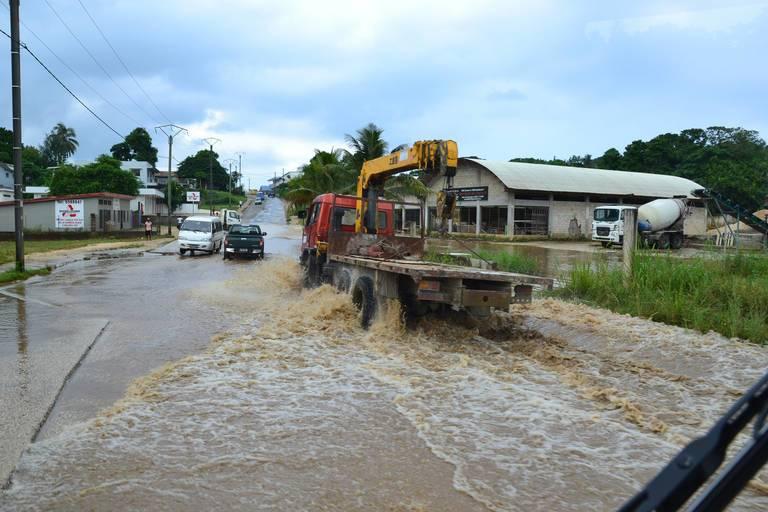
Size usually speaks volumes when it comes to moxie. The United States, Russia, China and even Canada with its sprawling landscape, are countries we think of as having the ability to change political mindset.
But tiny New Zealand?
Faced with the looming prospect of entire islands disappearing under rising sea levels, New Zealand is designing the world's first climate change refugee visa program. Islands like Kiribati, which has been on the list for funding from the Green Climate Fund for years, is slowly being swallowed up by rising seas. Residents of Kirbati and Tuvalu, another Pacific Island, had applied to New Zealand for refugee status but were turned down since the state did not have a political mechanism by which to accept environmental refugees.
That is now changing. The new Labor-Green Party coalition sees the South Pacific's environmental problems as a platform issue, as recently elected Prime Minister Jacinda Ardern confirmed in a discussion with former Vice President Al Gore.
"We are anchored in the Pacific," Ardern said simply. " I see it as a personal and national responsibility to do our part."
"The whole world is pulling for you," Gore responded.
Of course, resettling refugees won't be simple in a country that is half the size of California and is considered 77th on the list of biggest nations. The Kiribati and Tuvalu islands have more than 100,000 residents. Fiji has already set up the framework for a relocation process, but many of the 11 principal islands in the area will be struggling in future years to adjust to climate change. Coastal degradation is only one part of the impact: drinking water access, excessive heat and storm surge are major threats for coastal communities, particularly on the area's smallest islands.
And it's getting some input from other parts of the world, where experts have been studying refugee migration and how countries respond to the need. One expert at John Hopkins University pointed out that it may not be enough to offer individual visas for refugees: larger, more comprehensive strategies may be necessary for entire populations.
Others have drawn attention to the humanitarian and cultural impacts of climate change and the eventual resettlement.
"The foundations of our unique heritage were taken," explained a Vanuatu Island refugee who was forced to relocate several times.
New Zealand, which faces its own climate impacts in the coming years and will inevitably shrink in size, is being applauded for its initiative. The question now, is, will individual countries, moved by moral compass, really be able to meet the needs of climate change refugees?
Flickr image: Simon Clancy
Five Social Impact Trends That Inspire Us
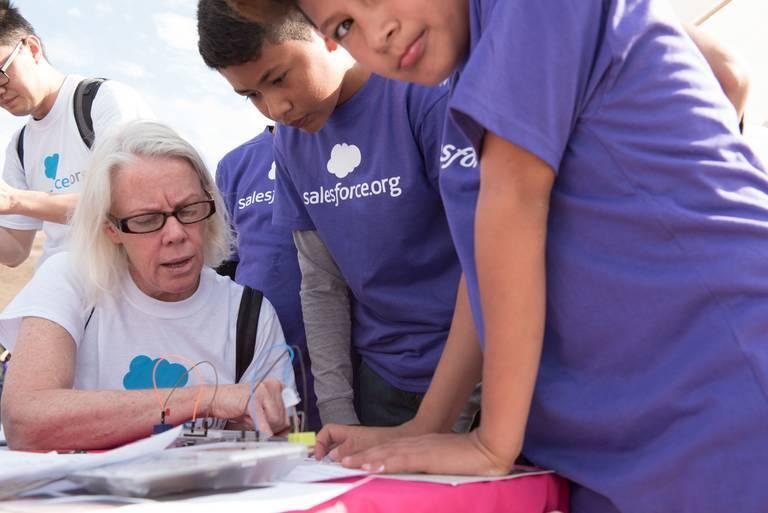

By Ebony Frelix, SVP, Philanthropy & Engagement, Salesforce.org, and Nasi Jazayeri, EVP/GM, Salesforce.org Philanthropy Cloud
For purpose-driven companies, these are interesting times. We have always believed that our mission at Salesforce is to improve the state of the world. In fact, studies show that purpose is a number one driver behind business success. Brand perception, consumer loyalty, employee retention and stakeholder optimism are all tied to how a company acts on its purpose.
In our trust-starved world, this is even more important. According to Edelman’s recent 2018 Trust Barometer, trust is at an all-time low with 52 percent of the global general population saying traditional institutions of power are not trustworthy. But what was most interesting is that 64 percent of respondents said CEOs should take the lead on changing the world - not governments or nonprofits.
This onus on companies to evolve from a contributor of social impact to a leader in social impact is a critical theme in the five trends that most inspire us in 2018.
Trend #1: Transparency is so in
Openness is not just a must-have, it is expected by every stakeholder. Every aspect of transparency from being your true self at work, to openly reporting progress against your impact goals are all expected of the new corporate citizen.
This trend is evident from the food we eat to the clothes we wear. Just look at companies like Hershey which uses a SourceMap, an interactive map showing consumers manufacturing facilities and the origins of key ingredients. Or Levi’s where Waterless jeans are not just defining the supply-chain but the global brand. And consumers are loving it - 7 out of 10 are willing to pay more for a product that promises total transparency and 1 in 2 would be loyal to a company for life if it provided complete transparency.
Trend #2: Making time to do good: an everyday expectation
Did you know that a majority of students about to enter the workforce say a job where they can “make an impact” is important for their happiness? The workforce in 2020 will be redefining what workplace volunteerism looks like. Companies like Salesforce and Johnson & Johnson are already committed to seven paid volunteer days off per year for each employee. These may seem like philanthropic platitudes but they are part of everyday business for trend-setting corporations.
We admire the current and next generation of citizen philanthropists - 97 percent of millennials want to apply their specific work skills to volunteering. At Salesforce, employees have donated more than 2.3M volunteer hours and we are connecting every employee to skills-based volunteering opportunities. This makes business sense - we know companies with strong CSR programs can improve employee retention by as much as 50 percent when compared to others. And Deloitte found that 89 percent of working Americans believe companies that offer volunteer opportunities have a better work environment than those who don’t.
Trend #3: Leaders who inspire = brands that inspire
CEOs have taken a stand on polarizing issues more in the last five years than at any other time in history. Purpose is about defining a company’s position on issues like climate change, immigration, LGBTQ rights, workforce diversity and gender parity. While that purpose may start with a leader, it will echo in the halls of your workplace and can penetrate communities, partners, networks, supply chains and your global brand. Take CEO Laurence Fink’s recent call to action to Blackrock’s investors - urging and inspiring major businesses they invest in to do more to change the world. Howard Schultz has always been a strong environmental activist, reflected in Starbucks’ water and packaging decisions, and Paul Polman is a global development champion, with Unilever leading the way on addressing the Sustainable Development Goals. Our own CEO, Marc Benioff, inspired many by taking on LGBTQ rights for colleagues in Indiana.
Trend #4: Purpose is profit
Purpose often seems counterintuitive to profit but in reality, it’s the key. Strong brands that choose the path of collective good find they outperform in shareholder value. Over a 15 year period, corporate responsibility translates to on average $1.28 billion in additional shareholder wealth. Brands that espouse human values over business as usual are rising in popularity and value. For two years now, REI has closed its stores on Black Friday and paid their employees to spend time outside instead, encouraging others to do the same. In that first year, REI added 1 million new members (its largest growth ever), with an estimated 2.7 million customers pledging to spend the day outside.
Inspiring moves like this have led to long-term business gains simply by understanding that brand translates beyond product.
Trend #5: Impact beyond grant-making
Businesses thrive on ROI, but measuring social good impact is still largely uncharted territory. How can we report beyond grant dollars, sustainability reports, and volunteer time? For example, Puma measured the company’s financial impact on the environment - €145M. Fortune 500 firms currently spend more than $15 billion a year on CSR activities and that number will continue to rise but when will we begin to talk about the impact of those investments? Microsoft decided in 2016 to tie executive bonuses to meeting diversity goals. How will this policy change the pathways to tech careers for often marginalized, minority youth? We have a responsibility now to go well beyond reporting how much we invest to talk about what our investment are helping and hoping to solve.
Companies like ours are hungry for the right tools to measure the good we do. What we need is a new and simplified impact platform. At Salesforce, we are leveraging our innovating technology to work with communities creating a dynamic network where companies and their employees can find information quickly, connect with causes and engage with communities, all while measuring their social impact. This is where CSR is headed in the next five years - where community goals meet company goals, we can all commit to change the world around us.
To truly lead in social impact in the future, we need ultimate transparency, built-in volunteer engagement, bold corporate leadership, more purpose for profit, and global impact numbers that speak for themselves. Buckle up 2018. This is going to be a good year for doing good.
Image credit: Salesforce.org.
Activating the SDGs into business operations

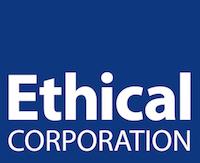
If the Sustainable Development Goals are to be met, business will have to play a major role. But how can companies go about integrating the SDGs into their own business operations?
To help you ensure the SDGs are aligned to your core business, 4 senior leaders are ready to share their experiences and strategies live. Join us next Wednesday, 7th February, at 2 pm BST for our free online webinar with:
- Pedro Ortún, Senior Advisor CSR/SDGs, European Commission
- Mario Abreu, Vice President Environment, Tetra Pak
- Louise Koch, Corporate Sustainability Lead, Dell
- Aris Vrettos, Programme Director, Cambridge Institute for Sustainability Leadership
In this 1 hour webinar, you will learn how innovative businesses are looking to drive the required shift in thinking and operations to meet the SDGs
- Where to start: Picking the right SDGs to suit your business
- Identify the right partners to drive this change; internal departments, NGOs, academia, start-ups and competitors
- Activating the SDGs within the business
- Discover how businesses are forecasting these future positive impacts on business, the industry, society and environment
Can’t join? Sign up anyway to receive the full post-webinar recordings: http://events.ethicalcorp.com/rbs/webinar/
Candy Telani Anton
Head of Europe | Ethical Corporation
0207 375 7162
California Pushes The Envelope on Energy Storage with New Pumped Hydro Proposal

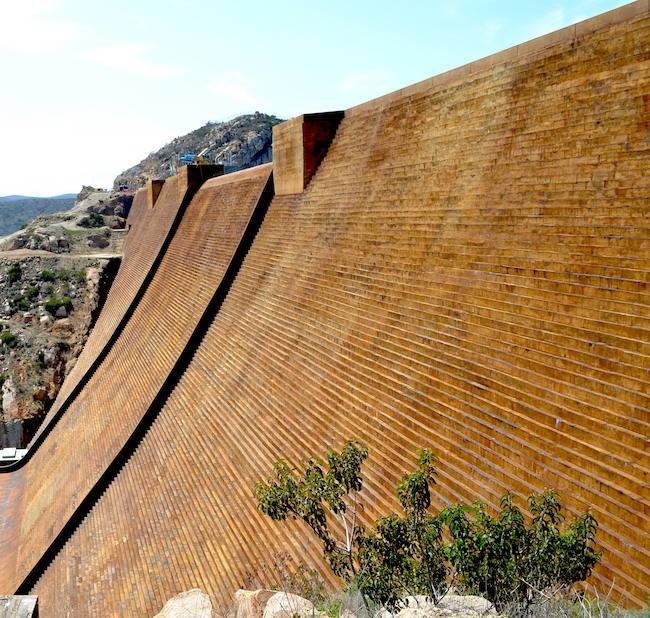
If the blowup over President Trump's new solar tariff proves anything, it proves that the renewable energy transition is inevitable. A new hydroelectricity project for the City of San Diego, California is a case in point. The city recently raised the level of an existing hydropower dam to hold more water, and now it is considering a massive new energy storage element that would help the grid support more wind and solar power.
The project provides support for the view that the new solar tariff is little more than a "speed bump" on the road to more sustainable future. Trump's tariff is all but certain to disrupt the lives of individual solar workers, business owners and investors to some degree, but the overall impact is beginning to look like more smoke than fire.
Pushing the envelope on US hydropower
You wouldn't know it from all the buzz over the latest high tech solar cells and wind turbines, but until very recently hydropower accounted for the lion's share of the nation's renewable energy pie.
That situation is rapidly changing. With wildlife conservation and environmental impacts in mind, there are few remaining opportunities to construct entirely new hydropower facilities in the US. In fact, this year the US Energy Information Agency expects wind energy to surpass hydropower for the first time ever.
There are still opportunities for growth in hydropower production, though. The US Department of Energy has been experimenting with ways to squeeze more electricity out of existing hydropower dams, and some interesting developments are occurring in the fields of wave energy, tidal energy and low impact hydrokinetic electricity.
It's also worth noting that the importance of hydropower goes beyond the number of megawatts produced by the nation's hydropower dams. The US Department of Energy foresees that hydropower provides the kind of stable, on-demand electricity supply that helps balance the variability of wind and solar.
Just a couple of weeks ago, the Energy Department posted an article describing how hydropower supports wind and solar. Here are some key points:
As the grid evolves in the 21st century, hydropower will be increasingly valued for its ability to respond quickly to disturbances in the grid and be dispatched on demandHydropower’s flexibility means it can help ensure power supply and quality even when high levels of variable power sources are on the grid. When countries run most or all of their power systems on renewable energy, it is often enabled by significant hydropower resources.
The Energy Department's 2016 Hydropower Vision lays out the potential for the US to produce 30 gigawatts more hydropower than currently, with much of the increase coming from existing dams.
The 2016 report also supports an earlier Energy Department analysis from 2012, which describes scenarios for achieving 80 percent renewable energy by 2050.
Hydropower + energy storage for San Diego
That brings us to the new proposal to add an energy storage component to an existing hydropower facility owned by the San Diego Water Authority.
The project has its roots in the city's recent $1.5 billion Emergency and Carryover Storage Project, designed to provide water supply for up to six months in case of systemwide distruption due to earthquakes or prolonged drought.
Two of four major facilities in sprawling project were constructed under design and management services provided by the A-list firm Black and Veatch. The company's award-winning work included raising the existing San Vicente Dam an additional 117 feet, which doubled the size of the San Vincente Reservoir.
The latest twist is a proposal to add 500 megawatts of energy storage to the system. Dubbed the San Vicente Energy Storage Facility, it would have the goal of increasing "the efficiency and availability of renewable energy for the region," as described by Black and Veatch. Here's more:
The SVESF will store energy by pumping water to an upper reservoir when energy demand is low and releasing water from the upper reservoir through turbines when energy demand is high. The “pumped hydro” energy storage solution would support power grid operations and enable significant and sustained integration of renewable wind and solar energy into the power supply mix.
If you are already familiar with pumped hydro energy storage systems, this will ring a few bells:
During peak energy demand, water would flow downhill to turn hydroelectric turbines. During off-peak periods, including daytime when renewable energy supplies exceed demand, water would be pumped to the upper reservoir.
To ice the cake, the added revenue from SVESF would provide a funding stream for renovating the system's aging infrastructure, without a consequent increase in water rates.
The new solar tariff: a hiccup, not a seizure
Circling back around to that solar tariff, it's true that startups have been much in the spotlight as the US transitions to renewable energy, and some of them are exposed to the negative consequences of Trump's decision.
However, diversified legacy companies like Black and Veatch also come in for their share of the credit for pushing the US renewable energy sector forward, and they may be less exposed to fallout from the solar tariff.
The San Diego energy storage proposal, for example, is just part of Black and Veatch's long term strategy for growing its renewables business.
Last September, the company partnered with the Renewable Energy Test Center in California to launch a new service called "energy storage bankability."
The new partnership will test and validate emerging energy storage technologies, providing a significant assist to new products on the verge of commercialization.
The Renewable Energy Test Center's role is to help predict the lifetime performance of a product. Black & Veatch is contributing its experience in "independent assessment of alternative energy technologies and the design and construction of PV plants, microgrids and other systems that deploy PV and energy storage technologies."
Solar tariff or not, it looks like renewables have a bright future in the US.
Photo (cropped): San Vincente Dam via Black and Veatch.
What’s Really ‘Green’? A Look at Beef Grazing Operations
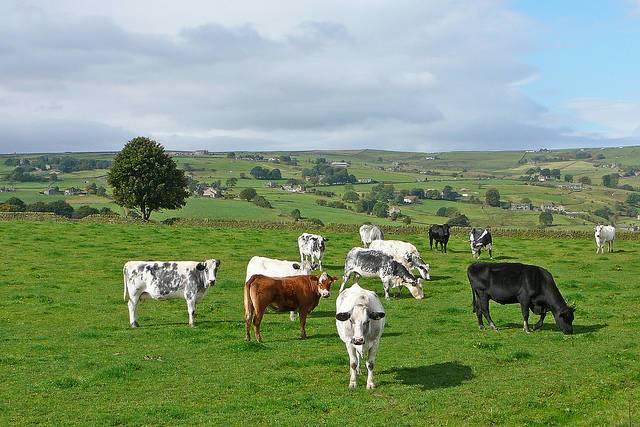
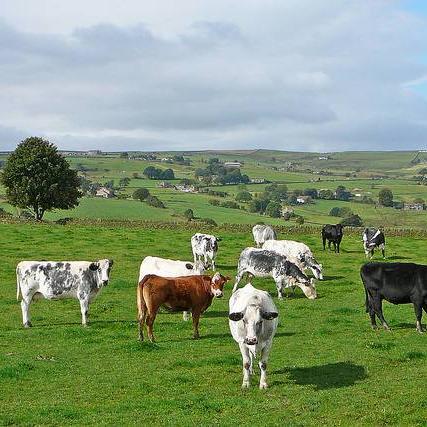
By Jonathan L. Gelbard
In my previous post, I took a look at examples of greenwashing that are making the benefits of purchasing “sustainable” beef hard to achieve for producers and buyers. How much of a difference can you make by “voting” for sustainability through your beef purchasing choices? To answer this question, I follow a science-based green purchasing framework. The first steps are to identify (1) the environmental and other (e.g., health, economic) impacts of poorly-managed operations, and (2) the solutions to each impact.
In the beef lifecycle, cattle spend the first half to two thirds of their lives on small ranches and farms (cow-calf and stocker/backgrounder operations). When poorly managed, these grazing operations can cause extensive pollution, land degradation and species endangerment, and generate considerable climate-disrupting emissions. The good news is that well-managed rangelands (grazed natural ecosystems, mostly in the western U.S.) and pastures (farmland planted with grasses to graze livestock, mostly in the eastern U.S.) provide valuable ecosystem services to society.
By purchasing “sustainable” beef, buyers can avoid contributing to consequences of poor management, and can support benefits provided by well-managed operations, on a massive extent of American lands. U.S. livestock (mostly beef cattle) graze over 780 million acres—an area six times the size of Texas. Below I summarize top environmental impacts of poor ranch management, and benefits of good management.
The Climate Crisis – Emissions & Vulnerabilities
Impacts of Poor Management: Grazing operations generate the largest percentage of beef’s heat-trapping pollution. For example:
- One study estimated that approximately 76% of greenhouse gas (GHG) emissions of U.S. beef production result from the cow-calf phase; 11% from stockers; and 13% from feedlots;
- Utah State University reported that that, “the cow-calf phase is responsible for approximately 80% of the GHG emissions from the entire beef production system.”
Top forms of climate-disrupting pollution emitted by grazing operations include enteric methane (mostly from cattle burps), nitrous oxide (from manure deposited on pasture), and carbon dioxide (CO2, from losses of soil carbon to the atmosphere through erosion).
Poor management also makes ranches more vulnerable to drought. When it is too dry to grow enough grass, ranchers have to feed cattle hay ("supplemental feed"). Scientists estimate that the climate crisis could increase supplemental feed costs by up to $235 million per year for California ranchers alone. These economic impacts will be most severe on poorly managed ranches with degraded soils and forage.
Benefits of Well-Managed Ranching: A variety of grazing, feed and breed management practices reduce heat-trapping emissions of grazing operations. For example, well-managed grazing can increase the amount of carbon stored in the soil, and reduce emissions of heat-trapping methane, nitrous oxide, and CO2.
Soil carbon sequestration is the highest profile benefit, but how much carbon can well-managed ranches store in soils? Current scientific consensus is that there is greater sequestration potential:
- On overgrazed ranches, rather than on well-managed operations where soil carbon “pools” are full;
- In former croplands, which have depleted carbon pools from being tilled;
- On eastern pasturelands than in western rangelands (wetter climates support more plant growth).
As noted in my previous post, scientific consensus currently views carbon sequestration as an important “stabilization wedge” to advance, not as the “silver bullet” that some claim.
Since climate-smart ranching strategies focus on improving production efficiencies, management quality, and resilience to extreme weather, they offer economic opportunities to producers and mitigate risks.
Soil Health
Impacts of Poor Management: According to a Cornell University study, one hectare of overgrazed pasture can lose more than 100 tons of soil to erosion per year, more than 16 times that of well-managed pasturelands. The authors estimated that 54 percent of U.S. pastureland is being overgrazed.
Benefits of Well-Managed Ranching: Good stewardship of soil health is the foundation of successful ranching. Well-managed grazing minimizes erosion, evenly distributes manure nutrients, and maintains soil fertility and forage productivity. Since healthy soils absorb more rainfall, slow runoff, and store more water, additional benefits include reduced sediment pollution of waterways and increased drought resilience. Optimizing soil health also cuts fertilizer costs and pollution-related risks.
Water Quality
Impacts of Poor Management: Top polluters of rivers and streams assessed by the U.S. EPA include "grazing in riparian zone or shoreline zones" (37,265 miles), "livestock (grazing or feeding operations)" (31,158 miles), "rangeland grazing" (17,974 miles), and "animal feeding operations" (13,480 miles).
Where this pollution includes dangerous pathogens such as E. coli, Leptospira, Cryptosporidium, and Giardia, it threatens the health of families swimming downstream. Pathogen loads increase in grazed watersheds when livestock deposit dung into streams, and when dung runs off into waterways.
Benefits of Well-Managed Ranching: Healthy vegetation cleanses runoff by trapping sediment, nutrient, and pathogen pollution before it reaches waterways. Well-managed ranches precisely apply nutrients and pesticides in ways that prevent runoff into surface and groundwaters. As a result, water leaving ranches and entering waterways is clean, maintaining healthy fish populations and minimizing environmental, health and business risks posed by water pollution.
Water Use Efficiency & Freshwater Depletion
Impacts of Poor-Management: Inefficient water use, still too common on America’s ranches and farms, depletes waterways and aquifers. In California alone, the nearly 1 million acres of irrigated pasture require as much water as a city the size of Shanghai.
Benefits of Well-Managed Ranching: Well-managed ranches efficiently deliver water to animals, preventing freshwater depletion and using the minimum quantity of water necessary for production. Good grazing management enables ranches to get more out of every raindrop by slowing runoff, so that more rainwater is absorbed into the soil instead of running off into waterways. Healthy soils absorb water like a sponge, keeping more in the system to support productive grasses and livestock—and native plants and wildlife. Optimizing water use efficiency reduces costs of both water fees and energy for irrigation pumping.
Native Plants & Wildlife
Impacts of Poor Management: Scientists estimate that poor grazing management contributes to the decline of 22 percent of threatened and endangered species, nearly as many as logging (12 percent) and mining (11 percent) combined.
Much of this has to do with habitat degradation. In the American West, for example, livestock grazing occurs on about 250 million acres of federal public lands, many of which are in arid regions particularly vulnerable to impacts of poor grazing management (see also this classic article). Public Employees for Environmental Responsibility reported that almost 40% of Bureau of Land Management grazing allotments surveyed since 1998 (over 33 million acres) are impaired, with poorly-managed grazing the primary cause of lands not meeting rangeland health standards.
Another impact is killing wildlife, especially predators, to protect livestock. According to 2010 figures, USDA’s “Wildlife Services” division spends over $10 million per year killing predators for livestock protection. Numbers of predators killed in 2016 totaled 76,963 coyotes, 3,803 foxes, 997 bobcats, 459 badgers, 410 bear, and 332 mountain lion. Impacts of predator control cascade throughout ecosystems. As one rancher advised, “smart ranchers know that if you kill off coyotes, you’ll end up with more rabbits eating your forage.”
Benefits of Well-Managed Ranching: Well-managed ranches contribute to conservation in the landscape by maintaining habitats and conserving America’s natural heritage of native plants and wildlife. They take proactive steps to minimize conflicts with wildlife, and partner with agencies, scientists, NGO’s and neighbors to protect and restore sensitive species. Predator-friendly practices such as moving calving dates from winter to spring cut supplemental feed costs, since spring-born calves have fresh grass to graze.
Partnerships such as New Mexico’s Quivira Coalition and Nevada’s Results-Based Grazing Group are restoring fish and wildlife habitats on public and private lands. Others like the Western Landowners Alliance, Malpais Borderlands Group, Blackfoot Challenge, and California Rangeland Conservation Coalition are also engaged in conservation, generating environmental and economic benefits.
Conclusion
Given the vast differences between well-managed and poorly-managed grazing operations, your beef purchasing choices can help conserve a massive extent of land. To maximize benefits, first identify key impacts, which vary by region and operation type – e.g., between western rangelands and irrigated and eastern pastures. Next, develop purchasing guidelines comprehensive enough to recognize sources that achieve as many positive outcomes as possible. Make sure there are no critical gaps that could land your brand in hot water, and aim for step-by-step improvement – sustainability is a journey.
Some ask, “what better management practices (BMPs) should I look for?” Most producers respond with some version of, “Tell us what results you want to see and let us figure out the right practices to use to achieve them, given our location and management style.” There’s a menu of science-based, practitioner-tested BMPs that ranchers can choose from to achieve positive outcomes.
How can producers and brands prove that they have minimized the impacts and realized the benefits described above? After repeating this exercise for beef feedlots, I’ll explore certifications and eco-labels in the sector.
Jonathan L. Gelbard, Ph.D. is Principal and Senior Conservation Scientist at Conservation Value Solutions. As a researcher, writer, speaker, and advisor, he digs deep to identify root causes of problems, and catalyzes transformative solutions. Dr. Gelbard was Senior Scientist at the Grasslands Alliance, a partnership between NGO’s, certifiers and ranchers that developed and piloted a comprehensive certification standard for U.S. and Canadian beef cattle and bison grazing operations. The Grasslands Alliance is currently fundraising to support its development of certification and continuous improvement programs. Click here to learn more.
The Value of Variety in ESG Reporting


By Julia Wilson
“There are too many external reporting entities out there.”
It’s a common refrain heard among sustainability and CSR professionals these days. Whether you’re looking at the external raters and rankers that seek to stack companies up against their peers, or the standards setters like GRI and SASB, we can all agree that there’s an abundance of organizations in the environmental, social, governance (ESG) reporting game. I, too, have shared in this sentiment, whether speaking among friends at a conference or as part of industry panel discussions; everyday, it seems, a new organization or framework emerges, asking on behalf of clients, investors, or even society more broadly, for information about your company’s ESG performance and strategy. Managing lengthy questionnaires or responding to these requests on tight deadlines can feel overwhelming, particularly if the effort and resources needed to participate outweighs the value.
In that vein, I’d like to share my perspective on the current ESG reporting landscape. It might seem counterintuitive, but there is value in this variety--at least for now.
Sure, an abundance of reporting entities means that there’s plenty of excess out there. However, at the heart of external reporting lies the question: what does this diversity in ESG reporting entities afford us today? For starters, there’s value in recognizing the patterns that emerge. The ability to spot trends across multiple frameworks or standards is one way to validate your efforts and reconfirm the strategic areas of greatest importance to your key stakeholder groups. Conducting a materiality assessment, understanding your operations and stakeholders, and connecting your business strategy with your top ESG focus areas are all key to developing a coherent strategy. ESG reporting frameworks and standards can provide external validation that your efforts are focused in the right direction.
Reporting variety also means that there are some great options available when it comes to choosing the right mix of whatever ESG standards, frameworks, questionnaires and surveys makes the most sense for your company. There’s no question that each and every survey is not applicable for all companies or across all industries. Thus the right reporting selections for your company should support a cohesive mix of well thought-out indicators across all ESG areas most relevant for your business and to your stakeholders.
At Nielsen, we’ve taken advantage of this variety to craft our own internally-driven ESG framework, linking our ESG strategy and external reporting efforts as part of a cohesive cycle focused on continuous improvement. Focus and consolidation are at the core of this effort. By pulling in inputs from various reporting entities--well over a thousand, in our case--we’ve created our own consolidated internal “ESG database” of the metrics that matter most to Nielsen, cutting out the excess while recognizing the topics that bubble to the top. This is what we share with our internal subject matter experts as part of our external reporting efforts. But, more importantly, it serves as a key part of our ESG guidebook in developing our strategy and measuring our progress over time. It’s also useful as new trends emerge and certain ESG areas pick up steam over others.
No one reporting entity is perfect. As the world and environment around us rapidly change, the ESG reporting space will have to continue to evolve along with it. So how do we continue to personalize ESG reporting for our companies within a seemingly busy space? Think about what your company isn’t asked enough. Consider baking that into your external reporting strategy in a way that allows you to explain its relevance and own the outcomes.
On the flip side, give yourself permission to focus less on the areas that are immaterial to your business. This in fact might be an opportunity to further clarify your business model. Don’t ignore them--simply explain why they are irrelevant. Misplaced emphasis or inappropriate questions can be a blessing, not a curse; in this case, it’s a helpful sign that perhaps some clarification about the nature of your business would be useful. Given that most analysts, for example, only have a few minutes to review materials for each of the many companies they cover, providing additional clarity should help them--and your other stakeholder groups--better understand your business and what the future might hold.
In the world of sustainability reporting, there’s an ongoing push and pull; not only do we respond to questionnaire or survey requests on behalf of our stakeholders, but we also have the opportunity to shape our own public narratives. For Nielsen, this means sharing our strategic approach--and where we are on our long-term journey--through proactive measures, like our Nielsen Global Responsibility Report and our non-financial materiality assessments.
While it’s easy to lament the variety of reporting entities in the marketplace, harness the value in this variety to make the most of ESG reporting for your company.
Julia Wilson is Director of Global Responsibility & Sustainability at Nielsen. She is also a member of the Global Reporting Initiative (GRI) Global Sustainability Standards Board (GSSB).
March for Science: Why Carbon Offsets are Good Science
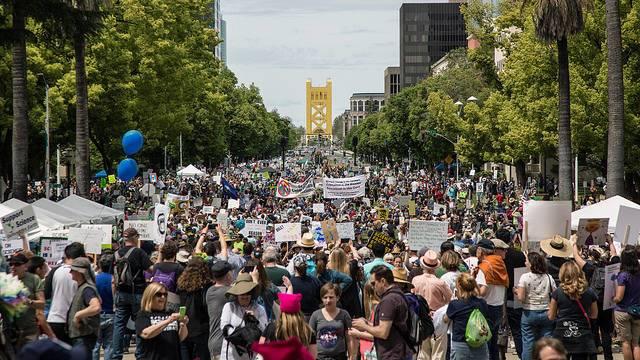

Science has been around since the beginning of human civilization. It was the engine behind Aristotle's ambitious effort to fly and even earlier than that, it helped the Babylonians fashion an understanding of time and their universe.
Today, science is helping us conquer challenges that were likely never envisaged by Aristotle or the Babylonians. It's given us the means to build airplanes, but it's also given us the insight to understand how transportation has impacted the environment we rely upon.
And according to March for Science, a non-profit movement backed by scientists, doctors, educators, businesses and individuals across the planet, science has given us another remarkable tool: the ability to strategize ways to reduce those impacts.
We often hear about the technology and methods that are open to businesses to reduce their everyday carbon emissions through better technology, improved land and materials use, the adoption of carbon trading programs and other innovative approaches.
But as the March for Science rallies highlighted last year, addressing climate change is a personal commitment as well. In April, more than a million people gathered across the globe in 620 cities to show their support for science and to call on governments to work toward stopping climate change. But the rallies' message also helped drive home the role that individuals, armed with their own goals, can make a difference as well.
The problem is, researchers tell us, there's still a fair amount of confusion over just how individuals can offset the impacts of their own travel and why exactly they should. What is the definition of a good carbon offset program, and what should individuals keep in mind when it comes to reducing greenhouse gases?
To answer those questions, we turned to Valorie Aquino,March for Science board member, who, in tandem with organizations like Cool Effect, are working to educate the public about climate change and the real actions we can each take to minimize its impact.
TriplePundit (3p): Can you explain why supporting carbon offsets so important?
Valorie Aquino (VA): The science is clear that our human activities influence the global climate system, which translate to both wide-reaching and local consequences for our communities. There are lots of ways and scales to make a difference in the urgent need to reduce our carbon footprint. The most effective include tackling problems at industry and policy levels and building political will. Collective individual lifestyle changes provide more choices. Travel offsets are a good option, particularly when combined with personal emission reduction and other activities.
3p: What are some of the things that consumers should look for when purchasing carbon offsets?
VA: The key when looking to purchase carbon offsets is transparency, verifiability, and additionality.
3p: Why is there such a push to get people to buy offsets when they fly. Do commercial flights really have that bad an effect on Mother Nature?
VA: There are a lot of daily activities that are contributing to our carbon footprint, and flying is a big one. The average American emits nearly 17 tonnes of carbon pollution, which includes estimates from flying, but for the business travelers and frequent flyers, that number keeps increasing. You can review more estimates here.
3p: Why does March for Science support purchasing carbon offsets?
VA: March for Science partnered with Cool Effect to give supporters an easy way to reduce their carbon footprint if they were traveling to March for Science and an option a lot of people were asking about in the months prior to the worldwide events.
3p: What are some of the best ways to help in the fight against global warming?
VA: Persist. Individuals do have the power to help in the fight against global warming, and there are different opportunities to get engaged. Participate in movements that support local initiatives, support transparent organizations and grassroots groups that are doing the good work they say they are doing, and vote at all levels for issues and candidates that advance science-literate policies. In short, use your voice, your choice, and your vote.
3p: What are the best ways that people across the globe can lend support to the March for Science this coming Earth Day?
VA: We intend to #keepmarching in 2018 and beyond. Join us and our great partners on the frontlines of science advocacy: www.marchforscience.com
Flickr image: Robert Couse-Baker
Biodynamics: Where Regenerative Agriculture Meets Regenerative Capital


By John Bloom
Biodynamic farming, a “beyond organic” approach to agriculture long respected in Europe, may finally be poised for a breakthrough in the U.S. It has growing cachet in the wine industry, where biodynamic wines earn both high scores and high price points. Prince Charles speaks of its ecological, spiritual, and cultural importance. And the unimpeachably mainstream Today show recently aired a segment by Maria Shriver touting biodynamic produce’s flavor and benefits to health and soil quality.
With its emphasis on approaching the farm as an integrated living organism and the farmer as a deeply knowledgeable orchestrator, biodynamics is a natural path to regenerative agriculture—a real corrective to the negative effects of our dominant food system. Realizing the potential of biodynamics, however, will require an investment strategy that is also regenerative.
The industrialized agriculture system we have today—including industrialized organic agriculture—grew out of a particular capital approach: extractive, impatient, and designed to maximize profit rather than value for the community. We’re not going to create a different kind of agriculture with the same kind of capital.
Now, while the biodynamic market is where the organic movement was about 20 years ago, is the perfect time to look at how we can build a biodynamic farming movement with long-term integrity in mind. The central question is, can we grow the biodynamics market with capital that is consistent with the farming philosophy?
Building a balanced farm ecosystem
Similar to organic farming, biodynamic agriculture eschews synthetic pesticides and herbicides, GMOs, and hormones and other pharmaceutical growth promoters for livestock. But biodynamic farming goes well beyond that. It stands out for its system-level approach. Farmers strive to create a diversified, balanced farm ecosystem that generates health and fertility from within the farm as much as possible. Accordingly, the biodynamic certifier, Demeter, certifies whole farms rather than individual crops, ingredients, or parcels of land.
Biodynamic farmers build rich soil using integrated livestock, cover crops, farm-generated compost, and crop rotation. Biologically diverse habitat controls pests and disease. At least half of livestock feed must be grown on the farm. (Many organic farmers also follow these practices, but the USDA’s organic certification does not require them to.) Biodynamics also recognizes farmers and farm workers as vital actors whose health is essential to the health of the system, rather than seeing them as simply managers or processors. Biodynamics is more than a method—it’s a coherent philosophy.
Moving toward regenerative agriculture
The biodynamics philosophy speaks to a number of rising concerns. Industrial agricultural has seriously depleted our soils, reducing both the vitality of their produce and their ability to store carbon—just when we need that ability most. Recent research shows organic farms have significantly better potential to store carbon because they have ample humus, a nutrient-rich soil component. Biodynamic farming creates humus in spades (doing so is a crucial part of the practice), leading to optimal soil health.
Wider adoption of biodynamics could also help solve an emerging crisis: the lack of young farmers to replace the generation that’s nearing retirement. Industrialization has drastically reduced the human element in farming and turned the land into a factory with inputs and outputs. That approach lacks appeal for younger generations, but biodynamics seems to be bringing millennials back to the land. (Availability of land to come back to is also an issue, but that’s another story.) Biodynamics restores the primacy of human and ecosystem health, and fosters a spiritual connection to the land. This is important if we want a sustainable food system that makes healthy food accessible to everyone: the farmer is the key transformative agent in agriculture.
Biodynamics recognizes and honors that. It raises the expectation bar and level of knowledge for farmers, requiring them to develop a refined understanding of earth science, economics, animal husbandry, and astronomy. That makes farming more engaging as a profession and increases the possibility that it can again be a real livelihood for small-to-midscale practitioners.
The benefits extend beyond individual farms and farmers. The biodynamic philosophy views farming as a social practice. Biodynamic farmers pioneered community-supported agriculture, and many partner with other farms, schools, medical and wellness facilities, restaurants, and other organizations to bring healthy food to the whole community. This orientation makes biodynamic farms a natural starting point for restructuring the food system in a way that improves community resilience, preserves local foodsheds, and shares benefits broadly.
Assessing the challenges
Biodynamic farming currently represents a small fraction of U.S. farming. Expanding from that base even to the level of organic farming is a familiar chicken-and-egg problem, layered with challenges particular to the demands of biodynamic practice. Access to enough product, both fresh and value-added, is the key here.
Until fairly recently the vast majority of biodynamic produce grown in the U.S. was consumed within CSAs. That is an excellent distribution approach in many ways, but it has had two limiting consequences. In talking with biodynamic farmers, we’ve found there are a fair number who do not see the social or economic need for certification. At the same time, people who have signed up to be part of a farm community are operating outside the general marketplace, so their purchases do not drive market demand or recognition of the Demeter certification.
Clearly, there is a great need for farmer and consumer education, and core organizations promoting biodynamics are beginning to respond. The Biodynamic Association has developed a curriculum to train farmers in biodynamic methods, and Demeter is working to help retailers introduce customers to biodynamics.
Regenerative capital is the path to scale
The other huge need is for capital to help biodynamic enterprises scale and to bridge the fragmented biodynamics system. Meeting these two needs is where I see the opportunity to prove out a new approach to building a marketplace.
I believe we can scale biodynamics faster through regenerative investments that follow the integrated capital approach: the coordinated use of diverse financing tools—including loans, loan guarantees, investments, and grants—along with network connections and advisory support. This approach aligns well with biodynamics’ emphasis on systemic work and relationships. To test that alignment, RSF recently launched the Biodynamics Capital Collaborative, an integrated capital fund launched with gift money and designed to support ventures that have the potential to both build consumer demand and demonstrate the value of certification.
The first funding from the Collaborative was part of a $1.56 million loan to Whitethorne LLC, a new for-profit subsidiary of the nonprofit Hawthorne Valley Association in New York’s Hudson Valley. Whitethorne will expand production and distribution of the HVA farm’s in-demand line of biodynamic and organic sauerkraut products. The financing includes a $900,000 mortgage on a new production facility in Hudson, New York; a $300,000 term loan for facility upgrades; and a $360,000 equipment loan.
The Biodynamics Capital Collaborative portion was key to providing the full financing Whitethorne needed; because the Collaborative was seeded with philanthropic dollars, we can take a more nuanced approach to risk with the loans it funds than we can with our typical investor-financed social enterprise loans. We also want and need to fund alternative business models that enable biodynamics to scale while honoring its spirit.
Values-aligned capital support is essential to giving those kinds of solutions a fair trial, and if supporters of food system change can provide enough of it, we have a chance to create a thriving model of regenerative agriculture that is economically sustainable on its own terms.
John Bloom is vice president, organizational culture, at RSF Social Finance, an innovative lending, giving, and investing organization based in San Francisco. He has been deeply involved with biodynamics and CSAs since 1988.